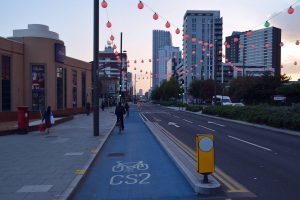Some Experts Blame New Cycle Lanes in London for Increased Congestion
London has been identified as the world’s most congested city according to global traffic information supplier INRIX.
Within their Global Traffic Scorecard analysis for 2021, INRIX revealed that on average drivers in the capital lost 148 hours this year in traffic, which is down just 1% on pre-pandemic levels and a much smaller decline than in many major cities.
Having ranked 16th last year in the same report, London has jumped to a rather unsavoury pole position, with Paris, Brussels, Moscow and New York completing the top five.
While there is no doubting London’s problematic infrastructure, the analysis has sparked a fresh debate on who, and what, is to blame. INRIX Operations Director commented on the findings, saying; “Use of roads is all about supply and demand. If the demand goes up but the road space is being shared with other forms of transport, there’s less tarmac effectively for the cars to be on, which then has an impact on the speeds on the road and therefore congestion.”
He went on to say that the development of new cycle lanes had a “negative impact on congestion.”
https://www.youtube.com/watch?v=lPA254l61cc
While this would certainly make for a logical explanation given the physical space needed for the implementation of cycle lanes, this comment fails to incorporate the full picture. Firstly, the UK has 38.3 million registered motor vehicles, up from the 27 million in 2007, meaning the sheer number of people who own a car has increased while the road capacity has remained virtually unchanged.
While he does add that London’s surge in traffic was due to its relatively strong economic recovery from the pandemic, the five busiest roads in the UK in 2020 were in London; none of these five feature adjacent cycleways for any substantial distance.

As well as this, it is important to note that there are approximately 162 kilometers of protected cycleways in London, while there are 14,400 kilometers of roads in London meaning there are protected cycleways on just over 1% of the capital’s roads.
Duncan Dollimore, Head of Campaigns at charity Cycling UK, told the BBC: “It’s incredibly simplistic for INRIX to suggest that the use of road is all about supply and demand, without considering how efficiently that road space is used.
“On Blackfriars Bridge, cycle lanes take up 20% of the road space but move 70% of the people across it at peak times, with cycle lanes across London moving more people more efficiently in less space.
“INRIX are focussed on the tarmac available for cars, when the question should be how we use and allocate that space better, changing travel behaviours and reducing congestion in the process.”





























